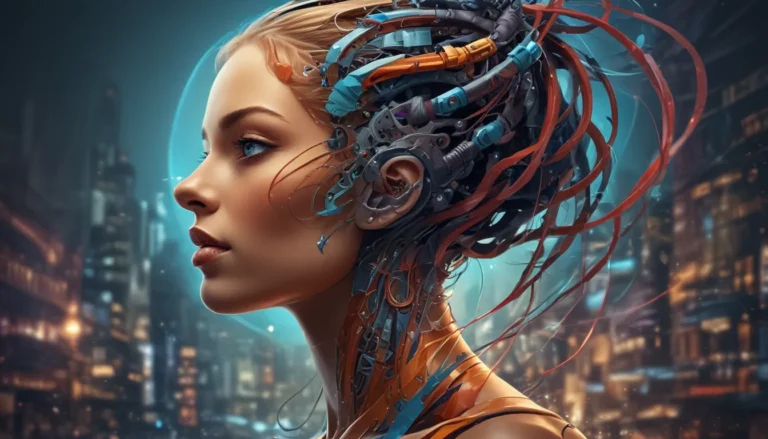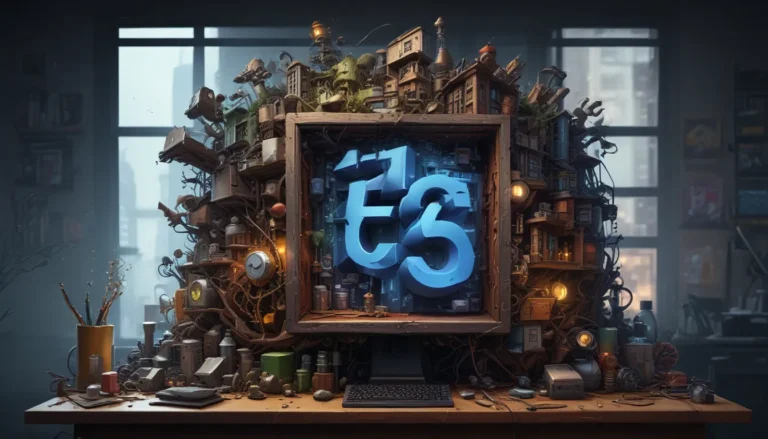A Note About Images: The images used in our articles are for illustration purposes only and may not exactly match the content. They are meant to engage readers, but the text should be relied upon for accurate information.
Welcome to the fascinating world of shader languages, where creativity meets technology to shape the visual landscapes of the digital realm. Shader languages, such as Cg (C for Graphics), are powerful tools that play a pivotal role in modern computer graphics. Whether you’re a developer, a graphic designer, or simply someone intrigued by the art of creating immersive virtual environments, understanding shader languages is essential.
In this article, we’ll explore 11 essential facts about shader languages, uncovering their significance, applications, and impact on the world of computer graphics. From simulating realistic lighting and shading effects to revolutionizing real-time graphics, shader languages are at the forefront of digital artistry. So, let’s embark on a journey to discover the intricacies of shader languages and gain a deeper appreciation for their role in shaping the visual experiences we encounter in games, simulations, and animations.
Key Takeaways:
- Shader languages like Cg are essential for creating stunning visuals in video games and virtual reality by simulating realistic lighting and shading effects, making digital experiences more immersive and captivating.
- Developed by NVIDIA, Cg has revolutionized real-time graphics, enabling developers to push the boundaries of visual fidelity and realism in interactive digital experiences, contributing to the evolution of computer graphics.
The Significance of Shader Languages in Computer Graphics
Shader languages are specialized programming languages used in computer graphics to define the visual appearance of 3D models. These languages are specifically crafted to create lifelike textures, lighting effects, reflections, shadows, and other visual elements that contribute to the realism of virtual environments. Without shader languages, the rich and immersive visual experiences we enjoy in video games, simulations, and animations would not be possible.
Understanding the Role of Cg in Graphics Programming
Cg (C for Graphics) stands out as a prominent shader language developed by NVIDIA, a leader in the graphics processing unit (GPU) industry. This high-level shading language provides developers with a versatile toolset to enhance the visual fidelity and realism of graphics-intensive applications. Widely used in video game development and other graphics-related fields, Cg has become a cornerstone of modern digital artistry.
Delving into the Intricacies of Shader Languages
Shader languages are indispensable across various stages of the graphics pipeline, including vertex shading, pixel shading, geometry manipulation, and tessellation. These languages empower developers to fine-tune the visual attributes of 3D models, such as color, texture, and depth, to achieve the desired visual effects. By leveraging shader languages, creators can bring their virtual worlds to life with stunning detail and realism.
Harnessing the Versatility of Cg Across Platforms
One of the key advantages of Cg is its compatibility with multiple platforms and application programming interfaces (APIs). This versatility allows developers to seamlessly integrate Cg into different environments, ensuring consistent performance and visual quality across various devices and operating systems. Whether you’re designing a game for consoles, PCs, or mobile devices, Cg provides a flexible solution for achieving remarkable graphics.
Elevating Visual Realism Through Material Properties
Shader languages enable developers to define intricate material properties for 3D objects, enhancing their appearance with characteristics like transparency, reflectivity, and subsurface scattering. By meticulously crafting these material attributes, designers can create visually compelling and immersive digital experiences that engage and captivate users. The level of detail achievable through shader languages elevates the overall realism and quality of virtual environments.
Streamlining Development with Cg’s Built-In Functions and Libraries
To expedite the development process, Cg offers a rich set of built-in functions and libraries that cover a wide range of graphics-related operations. From mathematical computations to texture mapping, these resources provide developers with the tools they need to implement advanced shading techniques with ease. By leveraging Cg’s built-in functionalities, creators can focus on unleashing their creativity and crafting visually stunning graphics without being hindered by technical complexities.
Embracing Programmable Graphics Hardware with Shader Languages
The advent of programmable graphics hardware, enabled by shader languages, marks a significant milestone in the evolution of computer graphics. This innovation empowers developers to exert fine-grained control over the rendering process, unlocking unparalleled levels of visual fidelity and realism. By harnessing the capabilities of shader languages, creators can push the boundaries of visual design and deliver captivating content that immerses users in breathtaking digital worlds.
Unleashing Creativity Through High-Level and Low-Level Shader Programming
Cg caters to both high-level shader programming, which emphasizes abstraction and ease of use, and low-level shader programming, which offers direct access to the underlying hardware. This dual approach empowers developers to adapt their coding techniques based on project requirements, striking a balance between efficiency and control. Whether you prefer a streamlined development process or crave intricate customization, Cg provides the flexibility to cater to your creative needs.
Enhancing User Experiences with Real-Time Rendering
In applications where real-time rendering is paramount, such as video games and interactive simulations, shader languages play a crucial role in delivering responsive and visually captivating graphics. The dynamic generation of visual effects based on user interactions and environmental changes adds a layer of interactivity and realism to virtual environments. By leveraging the capabilities of shader languages, creators can ensure that users are fully immersed in engaging and visually stunning digital experiences.
Pioneering the Evolution of Real-Time Graphics with Cg
The profound impact of Cg on the advancement of real-time graphics cannot be overstated. By pushing the boundaries of visual fidelity and realism in interactive digital experiences, Cg has revolutionized the way developers approach graphics programming. The enduring relevance of shader languages, exemplified by the success and versatility of Cg, underscores their indispensable role in shaping the future of computer graphics and digital artistry.
Conclusion
In conclusion, shader languages like Cg are not just tools for graphics programming—they are gateways to a realm of boundless creativity and innovation. By mastering the intricacies of shader languages, developers and designers can elevate their craft, create visually stunning applications, and push the boundaries of what is possible in the digital realm. Embracing the power of shader languages enables creators to weave captivating visual stories, immerse users in breathtaking virtual worlds, and leave a lasting impact on the ever-evolving landscape of computer graphics.
FAQs
What are shader languages, and why are they important?
Shader languages are specialized programming languages used to define the behavior of graphics processing units (GPUs) when rendering images and effects in computer graphics. They are essential for creating realistic lighting, textures, and visual effects in applications, games, and simulations.
How does Cg differ from other shader languages?
Cg (C for graphics) is a high-level shading language developed by NVIDIA. It is designed to be platform-independent and is widely used in the gaming and graphics industry. Cg provides a straightforward syntax and powerful features for creating complex shaders, making it a popular choice for developers and designers.
We are dedicated to providing trustworthy and engaging content that enriches your learning experience. Each fact on our site is contributed by real users like you, ensuring a diverse and insightful collection of information. Our commitment to quality and authenticity guarantees that the facts we share are not only fascinating but also credible. Trust in our dedication to delivering accurate and enlightening content as you explore the world of shader languages and computer graphics.






